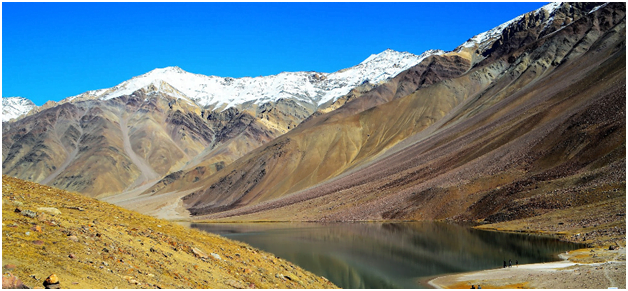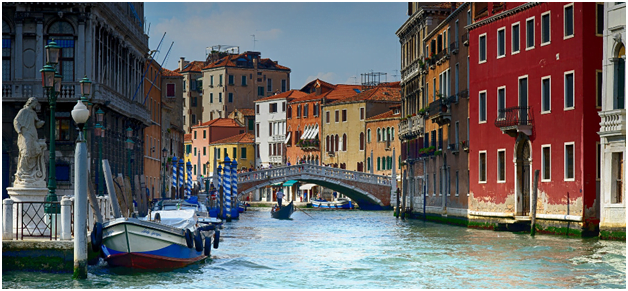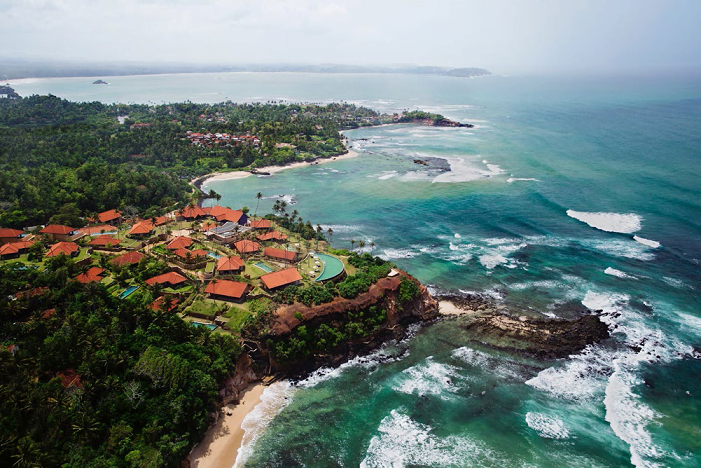Chosen as the destination for our book launch, we decided to pick Sri Lanka as our country to be spoken about in our travel segment too.
Disengaged from the Indian subcontinent by the Gulf of Mannar and the Palk Strait, Sri Lanka is a tropical island country in South Asia, located in the Indian Ocean to the southwest of
the Bay of Bengal and to the southeast of the Arabian Sea. Sri Jayawardenepura Kotte is the legislative capital, whereas Colombo stands as the commercial capital and the largest city of Sri Lanka.
Widely crowned as the pearl of the Indian Ocean, Sri Lanka boasts ofa history dating its origination around 30,000 years ago,carrying along a testimony of prehistoric human populations with roots in chronicles 125,000 years old. Benefitted by the geographic positioning and profound harbours, it earned immense strategic prominence from the period of the ancient Silk Road upto the modern Maritime Silk Road.
Earlier known as Ceylon since the inception of British colonial rule, it earned its political independence in 1948 and espoused its current name Sri Lanka in1972. Despite of having struggled with a 30 year long civil war that ended in 2009, the country never fell short of being most hospitable to the travellers frequenting it with varied tastes and interests and now has become a vogue destination for both seasoned and middling vacationers.
Mirroring an endless green expanse, Sri Lanka depicts the veritablesplendour ofnature and leaves its visitors feeling more closer to the mother earth. It avowals the exquisiteattraction of tropical beaches with palm peripherals, diverse landscapes, resplendent waterfalls, luxuriant vegetations, alluring tea plantations, wide-ranging wildlife, outlandish cuisine,
primeval monuments, shopping arcades,and numerous another imaginable astounding places catering to an array of traveller’s acumen.Imbibed in its essential core, centuries old Buddhist culture of SriLanka is widely reflected through its monumental architecture, music, dance, literature, visual arts, and day to day life of Sri Lankan locals.
It is privileged with a rich cultural heritage and upholds the genuineancient fundamentals of Buddhism as well as the earliest acknowledged Buddhist inscriptions of Sri Lanka, the Pali Canon, which dates to the Fourth Buddhist council in 29 BC.
Elevating country’s reverence is the fact, that eight spots of Sri Lanka have been adorned by the UNESCO in list of the World Heritage sites. The roll namely consists ofthe sacred city of Anuradhapura (1982),the ancient city of Sigiriya (1982), the ancient city of Polonnaruwa (1982),the old town of Galle and its fortifications (1988), the sacred city of Kandy (1988), Sinharaja Forest Reserve (1988), the Golden Temple of Dambulla (1991),and the Central Highlands of Sri Lanka (2010). The famous cultural triangle of Sri Lanka interestingly wraps most of these sites within its outlying expanse, hence giving an ease of well mapped hassle-free voyaging to the travellers.
Thanks to the social media and the ardent travellers sharing their experiences through it, Sri Lanka has recently emerged out as a favourite Asian destination for people across globe. It is tough not to fall in love with this country on visit where warmly smilinghappy-eyed locals welcome you to an array of varied landscapes, endless coastlines, implausible mountain spectacles, distinct wildlife, picturesque train rides, and immensely succulent assortment of food.
Having given a virtual tour of Sri Lanka at glance, now here comes the detailed travel nitty gritty for our readers who by now, would have surely decided to visit Sri Lanka in the nearest of times.
Getting there
Maximum people visiting Sri Lanka do acquire an electronic visa in advance, which is smoothly obtainable on their government website and is typically administered straight away, giving them the possibility of 30 days stay in Sri Lanka. However, denizens of Singapore, Maldives and Seychelles are excepted from getting an ETA. Usually costing around $30-35, the fee may vary depending on which country you are travelling from.
Safety
Talking about safety, Sri Lankan locals are generally unruffled in appeal with practically insignificant crimes verified against outsiders and travelers. However, travel insurance should still be on a must list to cover indubitably any untoward health and travel mishaps occurring.
Language
Although Sinhala and Tamil are the two main languages in Sri Lanka,almost everyone can manage speaking the conversational English, except in some far-flung remote villages.
Best Time to Go
Extraneous to the fact of it being a small country, Sri Lanka’s weather manifestations are ratherheterogenous with two monsoons each year. The low tourist season is from May-Aug,when it rainsin the South and West coast, making the places in the North and the East more frequented and less expensive. Whereas, the shoulder season lies between April-September being a good time with temperatures not too hot. Dec-March remains the peak season with southern coast being busiest and eventful. On the other hand, many religious carnivals, festivals and celebrations also takes place throughout the year. The Sinhala-Tamil New Year observed every April, the Poya Day or Vesak cheered every May and the Esala festivals in Kandy and Kataragama celebrated in August are some of the important cultural festivities of the country one may want to be a witness to.
Currency & travel cost:
Currency of Sri Lanka is Sri Lankan Rupee (LKR).Sri Lanka is a moderately inexpensive South Asian country to travel and holiday. Food, accommodation, transportation as well as shopping sector offers the categories ranging from cheap to reasonable to high end, and does not leave a hole in a money-wise restrained traveller’s pocket.
Preeminent Things to add to “To Do List” in SriLanka:
Visit Historic Sights and Monuments:
Varying from the Dambulla Cave Temple, or the Temple of the Sacred Tooth Relic in Kandy to the ancient city and remains of Sigiriya, there are ample options to stopover for the history and culture lovers. Making achoice between driving down on trip to the cultural triangle and surfing around the country sides to perceive architectural beauty, becomes travellers ambiguous delight.
Hopping on a picturesque Train Ride:
Undoubtedly, one of the best and yet cheapest things to do in Sri Lanka is to take a scenic train ride. Envisage being seated by the train door and viewing striking mountaintops, infinite tea estate hills,valleys, dazzling flora and other incredible views all around you. Gives a travel high, right!
Drive a Tuk-Tuk
If you are an adventure junkie and love doing unusual things, do not miss out on renting and riding a Tuk-Tuk in Sri Lanka. A small vehicle, easily manageable, giving you the ease and freedom of exploring the cities and enroute passages in your own fashion and time.
Go on a Safari
Another great highlight for the fans of wildlife is choosing to go on a Safari. Endowed with an exceptionally wide-ranging topography, SriLanka servesas an idyllic place for wildlife safaris. It gives an opportunity to biota enthusiasts to enliven the experience of being in close vicinity of wild elephants, deer, monkeys, leopard and other eye-catching fauna.
Unwinding by the Beach
Sri Lanka has severalshoreline towns to loosen up in, thanks to its widespread coastline throughout the country. Some most frequented beaches are Bentota, Arugam Bay,Induruwa, Unawatuna, Trincomalee, Marissa to name a few and there is no dearth of other beautiful places to unwind by the shores. Kitesurfing, snorkelling, boat safari, whale watching, and other water sports keep the visitors engaged adventurously.
Sri Lankan cuisine
Influence of the neighbouring country India’s cuisine can be largely seen in Sri Lankan food, although they tend to propose their own execution of traditional popular food and dishes. Oscillating between the well-liked snacks like samosas and kottu, main course of Sri Lankan Fish curry and Pol Roti-Daal, and desserts of sweet pancakes Appa, the Sri Lankan cuisine highly satiates the hunger bugs and tongue buds of any food lover.
Accommodation in Sri Lanka
It is advised to book your boarding in advance if you are visiting Sri Lanka during peak seasons. Else, otherwise it is easy to find a viable, affordable and people friendly accommodation throughout the country. From extravagant hotels in Bentota, Negombo, Colombo to affable homestays in trivial towns, locating a stay spot is not a tough task.






